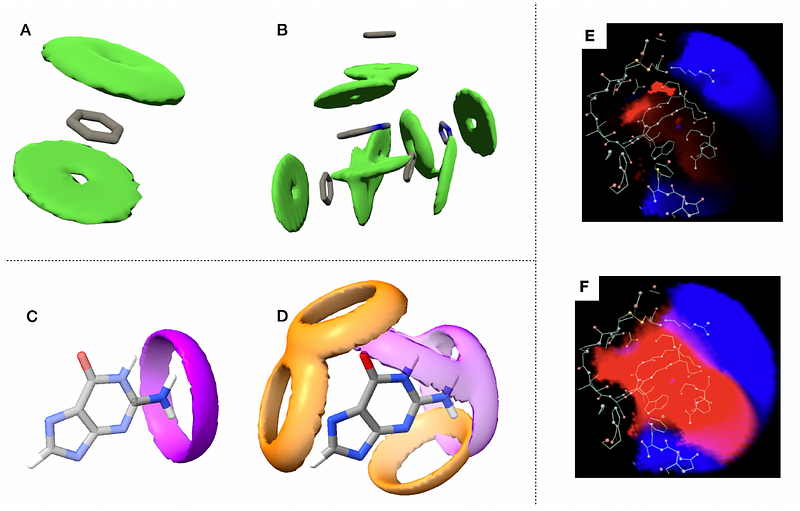Statistical Molecular Interaction Fields: A Fast andInformative Tool for Characterizing RNA and ProteinBinding Pockets

Statistical Molecular Interaction Fields: A Fast andInformative Tool for Characterizing RNA and ProteinBinding Pockets
Barquero Morera, D.; Mattiotti, G.; Kocev, A.; Rousselot, A.; Rouaud, L.; santuz, H.; Baaden, M.; Taly, A.; Pasquali, S.
AbstractDeveloping a physical understanding of the interactions between a macromolecular target and its ligands is a crucial step in structure-based drug design. Although many tools exist to characterize protein-binding pockets in silico, this is not yet the case for RNA, which has only recently been recognized as a suitable target for small ligands. Molecular Interaction Fields (MIF) are a useful tool to characterize the interactions of a given binding pocket. However, classical MIFs heavily rely on the use of probes, which makes their calculations accurate but very specific to the binding partners in question. We develop here a simple version of MIF, that we call Statistical Molecular Interaction Fields (SMIF), based on functional forms inspired by coarse-grained models and parametrized based on PDB structures and previous statistical analysis of the main form of interactions typical of macromolecules, namely hydrogen bonding, stacking, and hydrophobic interactions. We show that these fields, despite their simplicity, are very informative and overall in agreement with pharmacophoric models. Thanks to a carefully optimized code, our calculations are fast and can be performed in bulk on a large set of binding pockets or even on a full macromolecule. As shown in a few representative examples, the latter possibility opens the way to the analysis of systems as large as 20 to 80 k atoms in relation to the surrounding environment, i.e., a lipidic membrane, a small ligand, or another macromolecular partner, allowing for a detailed visualization of the possible interactions.